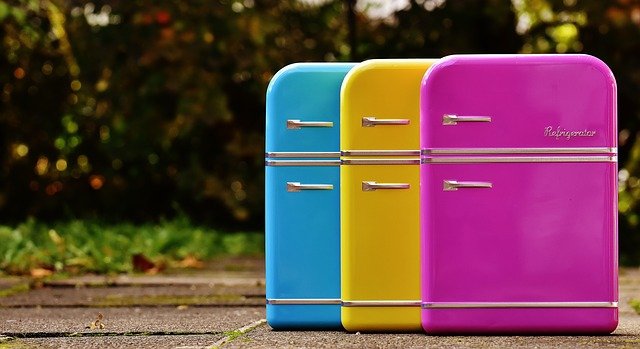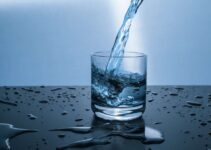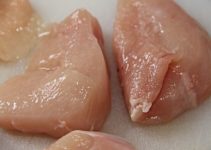Last Updated on October 21, 2022 by E.Pery
Refrigerators have become an essential convenience that we cannot do without. Any fault in the system could result in massive food losses that we can’t imagine incurring. Hence, you want your fridge to bring its A-Game in keeping your foodstuff cool 24/7.
One of the best ways to ensure that your refrigerator achieves optimum performance at all times is by being able to diagnose a problem as soon as it occurs quickly. This may not be easy if you do not know how the refrigerator works.
Going through the instruction manual could help. But it’s often a dense paper booklet full of jargon that you toss in the kitchen drawer like you do all your clutter.
Our comprehensive and straightforward guide below on how a refrigerator works will help you to get the most from this invaluable appliance.

The purpose of refrigeration
All food contains gut bacteria. When these bacteria increase in growth and number, they cause decomposition and make the food harmful for consumption. Refrigerators keep food fresh by slowing down the growth of bacteria.
The refrigerator does this by keeping a low-temperature state through 3 steps:
- The refrigerant passes around the food items to cool them off
- The refrigerant absorbs the heat from the food
- The refrigerant transfers the heat to cooler surroundings, after which its expelled.
Refrigerator working principle
A refrigerator executes its function through the principle that gasses get hotter when compressed and cool off when expanded. When the refrigerant is compressed, the temperature of the energetic molecules increases as they occupy less volume. When it is expanded, its temperature reduces as the energy is released to a larger volume of space.
Recommended reading: How Many Watts Does A Refrigerator Use?
It also uses the Second Law of Thermodynamics principle, which holds that when two things get into contact, the hotter object cools while the cooler object warms up. So when the refrigerant passes around foodstuffs, it cools them off by absorbing the warmth from them.
6 parts of a refrigerator
The refrigerator’s main components are the compressor, condenser, evaporator, thermostat, and expansion valve.
- The compressor
- The condenser
- The evaporator
- The expansion valve
- The thermostat
- Refrigerant
1. The Compressor
The entire process of refrigeration depends on the compressor. The compressor is a pump and a motor that circulated refrigerant throughout the unit system. It works by compressing the refrigerant vapor under tremendous pressure. It then pushes the compressed refrigerant out to the condenser coils, which expels it out as hot air.
2. The Condenser
The condenser consists of a series of spiral coils located at the back of the refrigerator. It liquefies the gaseous refrigerant by absorbing the heat from the foodstuff inside the fridge and expelling the heat out into the surrounding air.
3. The Evaporator
This part cools foodstuffs by turning liquid refrigerant into a gaseous state through the process of evaporation. It consists of finned metal tubes with high thermal conductivity to maximize the transfer of heat.
The evaporator absorbs heat blown through a coil by a fan and turns the liquid refrigerant into a gaseous state through evaporation. Evaporation cools the surroundings and keeps foodstuffs inside the refrigerator cold.
4. The Expansion Valve
The expansion valve, also called the expansion device, is a small device with a capillary tube that controls the refrigerant flow in the unit system.
It is very sensitive to refrigerant temperature changes. When the liquefied refrigerant passes through the expansion capillary tube, the valves remove pressure from the liquified refrigerant and change it into vapor.
5. The Thermostat
Although this is not part of the primary components of a refrigeration cycle, it plays a significant role in regulating the process. The thermostat regulates the temperature inside the refrigerator by engaging the cooling cycle as needed.
Recommended reading: How Long Does It Take A Fridge To Get Cold?
What Temperature Should A Refrigerator Be?
6. Refrigerant
This is a particular gas that is used in the gas compression cycle of a refrigerator. It is the liquid that keeps the refrigeration cycle going. This chemical also referred to as coolant, facilitates cooling perishables inside the fridge by alternating between a cool liquid and a hot gas.
In the early 20th century, the cooling chemical used in most fridges was CFC (chlorofluorocarbon), particularly Freon. However, these chemicals were both a health and environmental hazard. CFCs were found to be the cause of ozone layer depletion. So, Freon was replaced with more environment-friendly refrigerants like R-600A, R-290, and HFC-134a, also known as tetrafluoroethylene.
The process of refrigeration [In 6 steps]
Step 1
The process of refrigeration begins when the temperature inside the fridge rises about the set point. The heat sensors send signals to the compressor to start the cooling cycle.
Step 2
The compressor draws in the cold liquid refrigerant and pressurizes it. It also condenses the low-pressure gas and increases its temperature to turn it into high-pressure gas.
Step 3
The compressor then pushes the hot refrigerant gas toward the condenser coils. The hot vapor comes into contact with the room temperature and changes back into a liquid state at the condenser coils.
Step 4
The liquid refrigerant then moves towards the evaporator through the coils inside the freezer and main compartment.
Step 5
The low-pressure liquid passes along the evaporator coils, where it gradually evaporates. As it does, it absorbs heat from the food inside the fridge, thereby lowering the temperature back to the set point.
Recommended reading: How Long Does Rice Last In The Fridge?
How Long Does Ground Beef Last In The Fridge?
How Long Will Food Last In Fridge Without Power?
How Long Does Cooked Chicken Last In The Fridge?
How Long Do Hard-Boiled Eggs Last In The Fridge?
The evaporation process absorbs the heat in both the freezer and main compartments to bring the temperature down.
Step 6
Once it gets to the evaporator, it is changed back into gas and then flows back to the compressor to continue the cycle.
Note: As the compressor works, it gives off a low humming sound. When the fridge begins to give off terrible refrigerator noises, it is a sign that there is something wrong with the compressor.
The refrigeration cycle is used in several applications and appliances including, freezers, air conditioners, and heat pumps. The refrigerator uses the same principles and processes in keeping your perishables fresh.
Heat is extracted from foodstuffs and absorbed by the refrigerant. The heat is then moved to the compressor and passed through the condensation coils, where it is expelled.
7 signs that your refrigerator is not working
- The food is not cooling properly
- The food is spoiling quickly
- There is condensation on the outside frame of the fridge
- The air from the condenser coils is sweltering
- The refrigerator is giving out lousy refrigerator noises
- Ice is building up in the freezer
- The motor is hot
Understanding this process will help you to make a quick diagnosis when you notice that food is not cooling properly in the refrigerator.

E Pery is the founder of refrigerator.deals and a webmaster. He runs his own websites and loves… refrigerators! Convinced that buying and maintaining a refrigerator is not easy, he decided to create refrigerator.deals, in order to help people make the right choices.







![8 Refrigerator brands to avoid [3 to consider]](https://refrigerator.deals/wp-content/uploads/2021/08/Refrigerator-Brands-To-Avoid-211x150.jpg)
![How To Defrost A Refrigerator? [6 simple methods]](https://refrigerator.deals/wp-content/uploads/2021/08/How-To-Defrost-A-Refrigerator--211x150.jpg)
